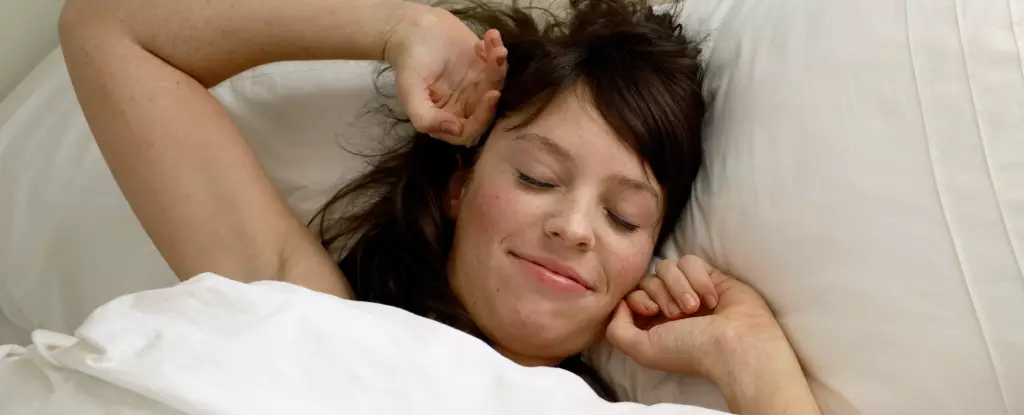The intersection of sleep and problem-solving has captivated thinkers and scholars throughout history. John Steinbeck famously noted that difficulties can feel markedly less daunting after a good night’s sleep, implying that sleep enables a clearer perspective. Recent psychological and neurobiological studies bolster this idea, asserting that sleep isn’t merely a time for rest; it is a critical period during which our brains engage in problem-solving processes. As science explores the nuances of sleep, it sheds light on how it might empower our decision-making abilities and fuel our creative inspirations.
One intriguing study conducted by Duke University illustrates how sleep can refine our decision-making processes, particularly in situations where we might be swayed by superficial impressions. Researchers orchestrated a virtual garage-sale game where participants navigated boxes containing various items of differing values. When asked to make instantaneous choices without the benefit of sleep, participants tended to gravitate toward the first few items they encountered—often overlooking layers of value that might be revealed later. In stark contrast, those who slept before making their decisions returned the next day with improved rationality and discernment, demonstrating that sleep facilitates a deeper processing of information.
This phenomenon underscores a larger cognitive principle: When faced with complex problems, our initial judgments can often cloud our more informed insights. Sleep effectively allows our minds to sift through information and reassess choices, mitigating the biases created by hasty assessments. Thus, good sleep hygiene might serve not only as a health imperative but as a crucial strategy for enhanced decision-making in personal and professional realms.
The Role of Acoustic Cues in Problem-Solving
Further advancing our understanding of sleep’s significance, researchers have found that auditory cues can stimulate problem-solving during slumber. A study from 2019 evaluated participants tackling a series of complex puzzles. As they worked, distinct sounds were played in the background. When these same sounds were reintroduced while participants slept, it seemingly reactivated connections to the associated puzzles, leading to higher rates of successful resolutions upon waking. This suggests that our brains continue to engage with challenging tasks while we are asleep, hinting at the potential for targeted stimulus to enhance cognitive processing.
The implications of this research are profound, highlighting the brain’s retention of information and its ability to utilize memory in innovative ways. It invites further exploration into how we can integrate sensory cues in our daily routines to promote better problem-solving outcomes.
Unveiling Hidden Connections in the Sleep State
Moreover, sleep has been shown to help in recognizing indirect associations that are often overlooked in waking life. A 2023 study examined how participants learned associations between unrelated items. While those who stayed awake struggled to connect the dots, those who had rested were able to uncover subtle links between the items after a night’s sleep. The conclusion drawn from this research indicates that dreams and REM sleep stages may play a pivotal role in contextualizing information, thereby enhancing creative cognition.
This revelation invites a reconsideration of how we approach learning and memory retention. Rather than viewing sleep solely as rest, it can be recognized as an active, insightful period for subconscious synthesis and creativity.
The notion that a mere nap can spark creativity is not merely anecdotal; it has empirical backing. Historical figures such as Thomas Edison are often cited for promoting the value of short naps to catalyze innovation. A 2021 study tested this hypothesis by incorporating a light sleep experiment where participants holding cups inadvertently entered a state of hypnagogia—a dream-like phase preceding deeper sleep. Participants who experienced this transitional state excelled in deciphering hidden rules within mathematical problems.
What’s more, the subsequent study in 2023 demonstrated that engaging cognitive tasks prior to sleep, particularly if they align thematically with the content of hypnagogic imagery, can further enhance creative outputs. The interconnectedness of sleep phenomena with cognitive tasks showcases the latent potential of sleep as a valuable tool for creatives and innovators alike.
Sleep emerges as a multifaceted ally in our quest for creativity and effective problem-solving. Through scientific exploration, we see that sleep has the potential to alleviate biases, reactivate problem-solving processes, unveil hidden patterns, and even enhance creativity within the subtle twilight of consciousness. As modern society grapples with the pace and demands of life, understanding and maximizing the power of sleep could well be the key to innovation and clarity in a chaotic world. Embracing the interplay of sleep and creativity might not only solve our nightly dilemmas but could also illuminate a brighter path for our waking lives.


Leave a Reply